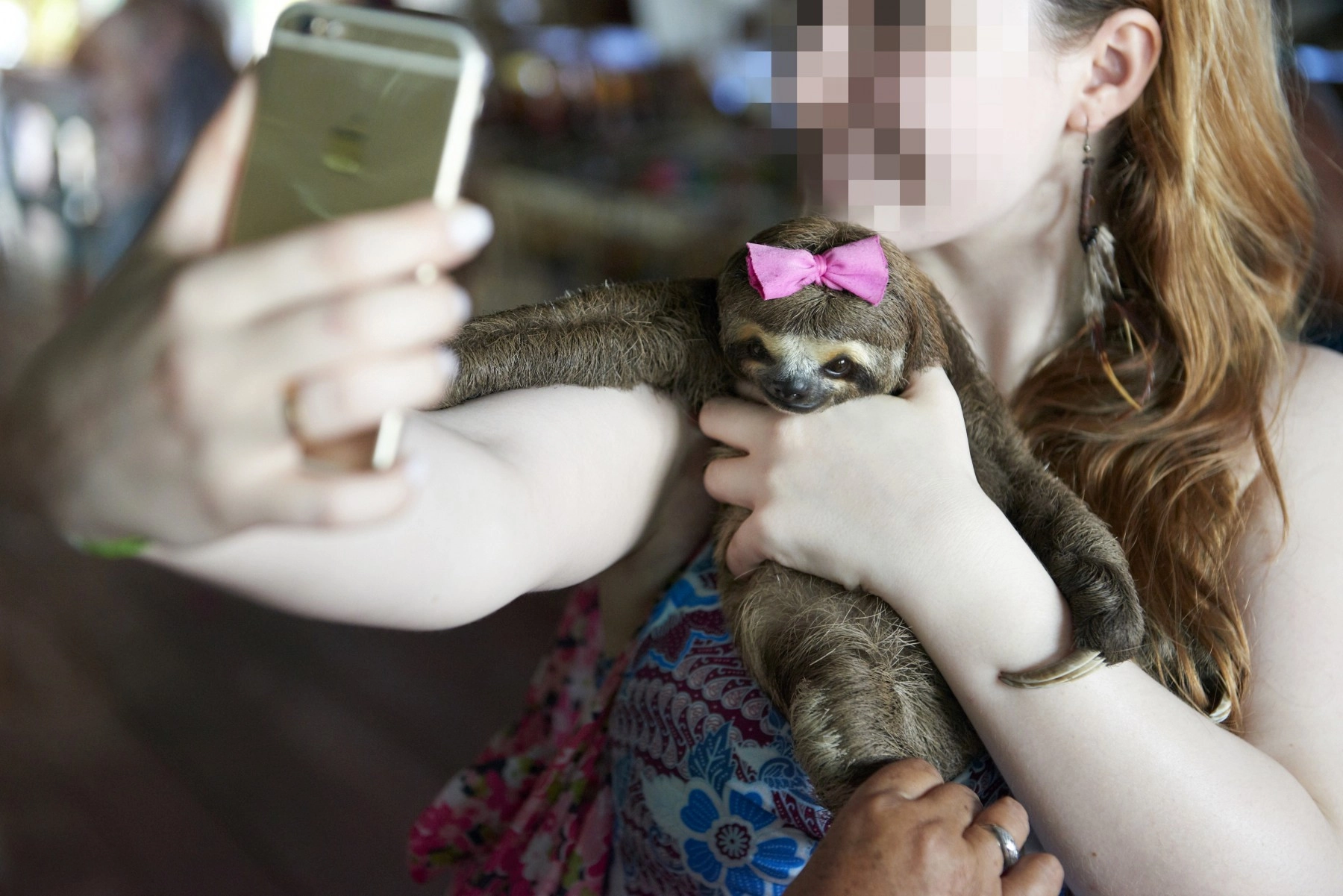
Wildlife kept as exotic pets are suffering on social media
News
New report exposes an online trend of owning and exploiting wildlife as pets fuelled by social media.
The AfA Social Media Animal Cruelty Coalition (SMACC)’s latest spotlight report, Wild animals ‘pets’ on social media: a vicious cycle of suffering, exposes a disturbing trend of wild animals such as monkeys, tigers, otters, and snakes, kept as pets and being ‘psychologically and physically’ tortured for ‘likes’ and comments on social media.
As a member of the AfA Social Media Animal Cruelty Coalition (SMACC), World Animal Protection is working with 12 fellow animal welfare and advocacy organisations to stop the proliferation of animal cruelty content on social media platforms.
Gilbert Sape, Global Head of Campaign for Wildlife at World Animal Protection, said:
We have been campaigning to end the suffering of wild animals being sold and kept as pets for many years. Every day, thousands of wild animals are poached or farmed and sold into the global multi-billion-dollar wildlife pet trade. They suffer a lifetime in captivity, with lack of adequate shelter, food and room to roam, with their full range of needs never being met.
“Social media is normalising and increasing the demand for wild animal pets, but animals are not props or entertainers, they are sentient beings being subjected to cruelty and abuse online for human use and profit. These are wild animals, they have no place in people’s homes, they have a right to a wild life.”
“The social media giants are continuing to facilitate the sharing, promotion and monetisation of animal cruelty content, resulting in astronomical numbers of views, likes and follows of animal suffering and abuse. It’s time for the platforms to take more responsibility and action to prevent this content reaching people in the first place. We will be continuing to work to make sure this happens.
Endangered wild animals kept as pets
Between September 21 and October 2022, SMACC recorded 840 individual links to videos from Facebook, YouTube, TikTok, Twitter, and Instagram, depicting a wide range of wild animal species being kept as pets in people’s homes.
Videos, which are very easy to find on social media platforms, show wild animals such as:
- lion cubs wearing nappies, bush babies dressed in baby clothes;
- monkeys fed bottles of milk;
- tigers being held on a leash; and
- other exotic animals being kept as pets.
Many videos included Critically Endangered species such as orangutans and Endangered species such as chimpanzees and tigers.
Social media is normalising the keeping of wild species as pets, leading to an increase in their demand. This, in turn, has detrimental impacts on animal welfare and fuels the trade in wild animals as pets.
Viral trends, often exacerbated by celebrities or influencers, have led to widespread miseducation about the suitability of wild animals as pets. Online content, often misinterpreted as harmless, also risks creating more demand for wildlife being bred, captured, and sold for the pet trade.
How you can help
You can help by following these three simple rules:
- Be mindful: using any wild animal for entertainment is cruelty (this includes pets)
- Report the content that includes a wild animal - if there is no option for "animal cruelty", then select the closest category.
- Don't like, comment or share post as the social algorithm can see any engagement as positive.

Exotic pets
Every year, millions of wild animals are captured to become pets of people who are unable to properly care for them.

Our work
We're working in Australia and around the world to end the needless suffering of animals by inspiring people to change animals’ lives for the better.
